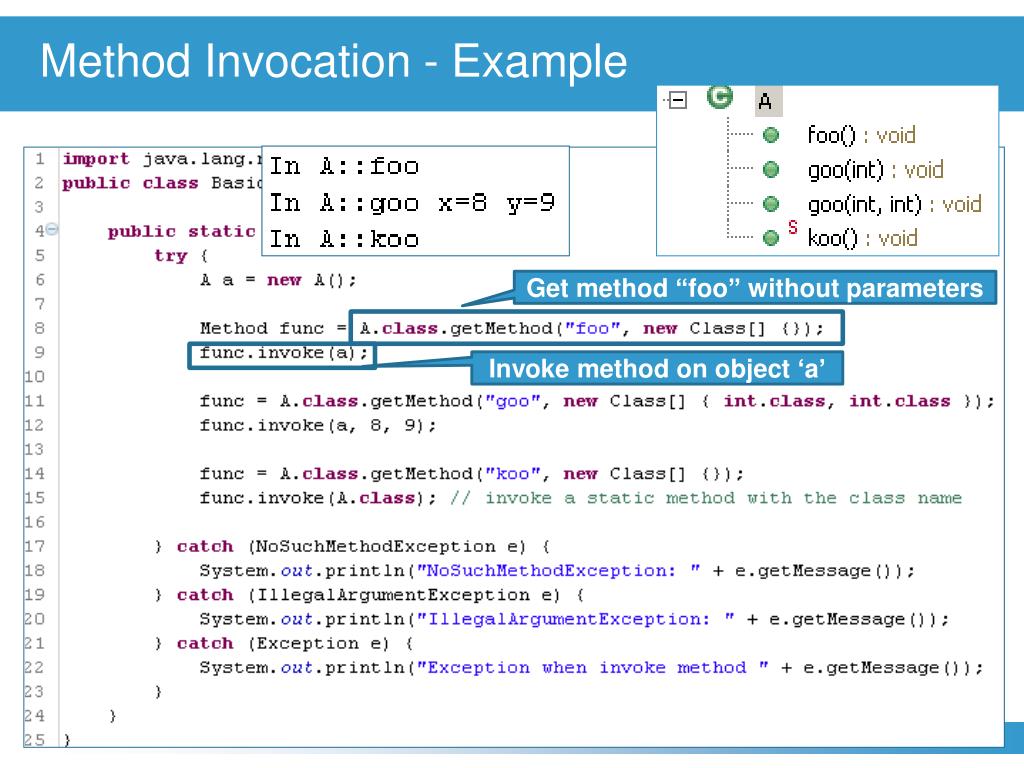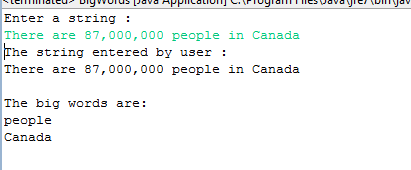

- Java reflection get return from method with argument how to#
- Java reflection get return from method with argument code#
It will explain the basics of Java Reflection including how to work with arrays, annotations, generics and dynamic proxies, and do dynamic class loading and reloading. This tutorial will get into Java reflection in depth. (String. Or, Reflection can be used to map the column names of a JDBC ResultSet to getter / setter methods in a Java object. ("User object has been created using constructor User()") This breaks down into the following constructs: M圜lass::class gives us the Kotlin Class representation for the M圜lass class. Our test class will be a simple model class having 2 constructors and a few methods for testing. Here is an example how to execute a method using reflection in Java.

Also provides the possibility to instantiate new objects, invoke methods and get/set field values. Reflection allows programmatic access to information about the fields, methods and constructors of loaded classes, and the use of reflected fields, methods, and constructors to operate on their underlying counterparts, within security restrictions. Get The Method: Next, we get the required methods from the StudentDetails class with the Class Object we created. The second argument is the array of arguments to be passed. So to invoke the Static Methods of StudentDetails Class without creating an instance we follow the steps highlighted below: Create a Class Object: We create a Class Object of Type StudentDetails using the.
Java reflection get return from method with argument code#
("\nArray length: " + Array.getLength(obj)) įor (int i = 0 i < Array.Java Reflection provides classes and interfaces for obtaining reflective information about classes and objects. First, to find the main () method the code searches for a class with the name 'main' with a single parameter that is an array of String Since main () is static, null is the first argument to Method.invoke (). System.arraycopy(obj, 0, newArray, 0, co) Required: A list of input parameters for the method, separated by commas, each preceded by its data type, and enclosed in parentheses (). Use void if the method doesn’t return a value. It will return all the public fields in both the class and all superclasses. Required: The data type of the value returned by the method, such as String or Integer. The getFields () method returns all accessible public fields of the class in question. Object newArray = Array.newInstance(arr, len) Optional: Modifiers, such as public or protected. getLength (obj ) ) for ( int i = 0 i arr = obj.getClass().getComponentType() Package myreflection import public class ReflectionHelloWorld System. The same is true when we write a test that includes mocking LocalDateTime. propertyKey: It is the name of the key to get.

args the arguments used for the method call. Parameters: target: It is the target object on which to get the property. args) throws IllegalAccessException, IllegalArgumentException, InvocationTargetException Parameters obj the object the underlying method is invoked from. public Object invoke (Object obj, Object. As an alternative, we could also manually call. Following is the declaration for .invoke (Object obj, Object. For example, Spring uses bean configuration such as: Inside the try-with-resources statement, we then get access to the mocked version of UUID and can define its behavior using Mockitos well-known when ().thenReturn () stubbing setup. Using reflection, the framework dynamically initialize the classes required. (Here is a set of examples of how to use JUnit.)įor web frameworks, developers define their own implementation of interfaces and classes in the configuration files. Reflection is the common technique used in frameworks.įor example, JUnit use reflection to look through methods tagged with the annotation, and then call those methods when running the unit test.

If the attribute isnt available, it falls back on Method.


 0 kommentar(er)
0 kommentar(er)
